Why is my hydraulic hand pump such hard work?
Make using a hydraulic hand pump as easy as possible.
A hydraulic hand pump is the ultra-dependable pump with no battery or electronics
Hand pumps are a great piece of kit. There are no batteries or electronics. They are dependable in an emergency when life may depend on everything working. And they are easy to repair. After 40 years, we are the experts on hand pumps. Hand pumps are our product. Micropac is our brand.
Your hand pump probably doesn’t need to be such hard work. Here are our fixes.
If my hand pump is just very hard work, what can I do?
You can change some things, but don’t lose sight of basic mechanics. You may be asking the impossible.
If you need to build up the pressure in a volume of fluid from zero to a figure, which will take energy. The way you are putting in the energy is using a hand pump powered by a human being moving a handle or a pedal You can’t dodge the basic mechanics that you learned at school. That’s the energy required. If it is a hand pump, the basic action is a lot of strokes with not much force, a few strokes with a lot of force or a clever mix. If force x distance moved is the energy input into a hand pump via the handle, juggling the calculations to provide your best option isn’t difficult. Talk to us.
So, the answer to the question is that there are some things you can do, but at a point, you may have to accept that what you are asking is hard work, however you do it. We are suggesting some hand pump tweaks and some other ideas as well to do the best you can.
If we are talking hand pumps, let’s look at a few ways of making things easier. Before we start:
Can we just clarify basic hand pump displacement and pressure? How fast you can you pump a hand pump?
A hand pump will produce a certain amount of flow on the down stroke and up stroke or indeed per revolution of a handle if it is rotary. What is the basic terminology?
A “reciprocating” hand pump moves up and down. A “single acting” pump will generate flow only on one stroke. A “double acting” hand pump generates flow on the up and down. Look at our YouTube video that explains all. We are very keen on not muddling single and double acting, so always say a pump produces so much flow “per double stroke.” If you aren’t clear on this, you can be 50% out. This is quoted in cubic centimetres (cc) or cubic inches (cu. In.). At very low pressures (often referred to as “free flow” if you are pumping fluid out at atmospheric pressure), the hand load will be very low. Start to generate pressure and the hand load rises, as you would expect. Basic mechanic calculations kick in and a piston rod subject to axial force is generating pressure. That is Pressure generated = Force on piston rod/Rod Area. The rod is probably moving through a short stroke and needing a relatively high load on the rod itself. On a simple single acting rod, the displacement per stroke is the rod area x the stroke of the rod. A lever mechanism will be used in the handle to reduce the load, (or “gain Mechanical Advantage”). That is basic mechanics that says whether you have a larger force moving through a short distance or a small force moving over a longer distance, the energy needed is exactly the same if you are using levers. The other question that isn’t always clear is how fast you can pump. Even at free flow with very low loads, we wouldn’t assume somebody can pump at more than 30 strokes per minute. 45 strokes a minute is quite frantic. Start to build pressure and 30 strokes per minute will be hard even for an athlete.
How can I make prefilling easier?
A Micropac drum pump with a large displacement for shifting a large amount of fluid with less strokes
This is a good starting point. Any hydraulic hand pump might be used to fill something up from empty at zero pressure then move on the building up pressure that takes more load on the handle. We are looking at each in turn. Yes, you can make prefilling a system from empty a lot easier.
Is your system empty or already full of fluid? And how big is the system? OK, it may be a lot of hand pump strokes at very little force, but it can be a real chore before you get down to the serious business of building up pressure. There are a few ways to make life easier if the system is empty and relatively large. Any hydraulic system or test set-up starts life empty and has to be filled with fluid at atmospheric pressure before you even begin building up the pressure for your job. Indeed, some hand pump systems are 100% for filling and aren’t built to generate pressure. Pumping water or oil in using a hand pump may be an easy job or the only way of doing it. For filling a system, the rule is always to go for a larger displacement hand pump to cut the number of strokes. Even if the forces are very small, a ridiculous number of hand pump strokes isn’t really sensible. Beware of repetitive strain injuries. Increase the pump displacement and the number of strokes reduces. For example, 200 strokes of a 50cc hand pump shifts 10 litres of fluid. Even at very low hand loads, 200 strokes are enough work for most people. If somebody proposes using a smaller pump and the strokes rise to 500 or 1000, that doesn’t sound practical to us. The system size is the key question. Divide that by the displacement of the hand pump to get the number of strokes. If filling is hard work, do just check out whether there is another way of prefilling that doesn’t involve the operator working. It is worth looking.
Maybe your system is already filled with water or oil. If it is a power hydraulic unit, for example operating a hydraulic cylinder in a baler or lifter, it is sure to be full of oil once commissioned. There is no prefilling. The moment you start pumping, there will be pressure built up and energy needed. The same will invariably be true if the hand pump is the manual standby system on something like a valve actuator when power isn’t available. If you are pressure testing a system or component, then the system needs prefilling with water or your test fluid before you start to build up pressure. This is an opportunity to make life easier. Consider prefilling the system using a can with an easy-pour spout, a bucket and funnel or even a hose from mains water. Make sure the water or oil is clean. Also keep in mind that if you need to empty a system at the end of a test, could you use a shut off valve or quick disconnect to save emptying the whole system. Or drain one system into the new one. Save water as well.
How do you prefill with a hose? Is using a hose something for nothing?
Yes, filling with a hose is an easy option, but just check this out.
It is quite easy and might make the job a lot easier on a larger water system. You could just fill using an open cap or port. Another option is to “tee” a hose into your system or hand pump to make it a better engineered installation. You could snap a hose onto your pump using the ubiquitous “Hozelock” female coupler. You could put the male probe part onto your pump or system. The two big requirements are that you fit a non return valve (or “check” valve) onto the system or hand pump so that it will let water into your system but never allow water back out into the hose, potentially polluting drinking water main. That check valve must be rated in excess of your system pressure. Our UK customers fit a second non return valve as well that is UK WRAS approved to meet the strict UK drinking water regulations. Again, you just can’t risk any water leaking back. The WRAS approved check valve very probably won’t be rated high enough for your system working pressure, hence we have asked for the initial higher pressure unit. Your Hozelok coupling will only have a limited pressure rating as well.
The advantage of prefilling with a hose is that you can boost the pressure up to mains pressure of 1, 1.5 bar or maybe slightly higher. That is pressure you won’t have to generate with a hand pump. That is a good idea. Just make sure that it is clean water going into the system.
Is maximum pressure on a hand pump really always hard work?
The answer is no, but a high pressure hand pump with low hand effort will be relatively small displacement per stroke. That’s the key consideration. The hand pump load often is hard work at maximum pressure but does not always need to be this difficult. The maximum working pressure on hand pumps from all manufacturers seems to be based on a force exerted by a human being of up to 400N. That is only a maximum figure. If a customer wishes to design a system around a lower maximum load such as the 20kgf/200N figure, use a smaller displacement hand pump. You will do more strokes at a lower force but the laws of physics will determine that the energy input is the same. If Energy is force x distance moved, you are exerting the lower force but moving a longer distance. The odd thing that we have found is that users home in on the number of strokes. 200 strokes at a low load are “far too many strokes” compared with 100 strokes at twice the load, even if the energy input is the same. Maybe humans are always the optimists on how strong people are and the desire to achieve everything quickly. Really, it should be a more rational ergonomic decision around what is best for the user.
How does handle length affect the load?
Very simple. Use a longer handle to cut the load.
Moving from a 500mm to a 1000mm handle will halve the load. However, the arc of movement traced by the operator’s hand will be double. Force x distance moved will be the same on either handle. If the high loads required for maximum pressure are just a non-starter, then use a longer handle. You cannot risk injury for operators. However, a longer arc of movement needs to be comfortable for the operator. You will also need to be able to physically accommodate the longer handle.
Will good ergonomic design make my hand pump easier to use?
Yes, ergonomics is vital in making hand pumps easier to use. Most certainly setting up optimum ergonomics during the design process will make pumping as easy as possible. Get it wrong and your hand pump set up could hurt the operator whether during the first test cycle or over much longer periods.
We are told that the human body can exert high loads over long periods using the legs, as on a bicycle. Foot pumps don’t seem that common, which is maybe strange. We manufacture foot pumps, but they only have specialist application in mechanical handling equipment. Maybe a foot pump needs a very solid mounting close to the floor, which limits their application. Releasing the pressure is also awkward unless it is integrated into the pedal as is done on our unit. Hand pumps are the way it is done. Aim to get the arc of movement as optimum for the operator, including the whole range of percentiles. Any designer must allow for operation by, for example, a 5% percentile small person through to, say, a 95% percentile large person. Making kit so it can only be used by a particular operator isn’t really viable anymore so a hand pump that is mounted too high or too low is not a good idea. Many installations use a vertical handle mounting where, for example the arc of moment is -15 degrees from vertical to +50 degrees from vertical. The operator is effectively pulling the handle towards and pushing away from themselves. Contrast that with a handle that is say -15 degrees below horizontal to +50 degrees above. The operator is then lifting and pushing down the handle. That is a very different duty for the human who is operating it. The reason that handles are so often horizontal is that the pump can then be mounted on a reservoir lid rather than the weaker sheet metal side of a reservoir with associated sealing issues. So, what works best for costs isn’t necessarily the best for long term operation.
I have prefilled the system but why is my hand pump still very hard work? How can I make my hand pump less hard work?
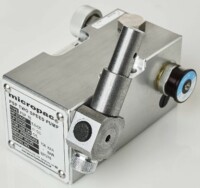
A Micropac PSP 2 speed hydraulic hand pump is our biggest seller and used worldwide. Up to 1000 bar on multi fluids.
There is one simple fix to look at if your hand pump is still hard work.
By hard work, do we mean far too many strokes at not much load or a lot of hard work at high pressures? The simple mechanics always come back to needing to put in a certain amount of energy which could either be lots of strokes at not much load or less strokes at higher load. At the extreme, a human simply can’t exert more than a certain load in cycles beyond what even an athlete or soldier can do. So, 200 strokes at 400N are probably ridiculous if that is part of your design. Asking an operator to pump 800 strokes at 80N would also be hard work. In an emergency, like rescuing a submarine from the seabed, maybe people would work in drill and achieve incredible results. We have already suggested halving the displacement of the hand pump and pumping twice as many strokes. That’s one option. One really good compromise is a two speed hand pump, using a high displacement low pressure stage followed by a small displacement high pressure stage. That’s the way to balance out hand load and number of strokes. Two speed pumps simply don’t work for any system like a forklift truck or gate valve where the system pressure is high over the whole range. They work for systems which start low and build up to high. For example, contrast our Micropac MW-12 hand pump that generates 12 cc per double stroke up to 400 bar with our MD two speeder that will generate 47cc up to 60 bar then you change over to a higher pressure stage that provides 4cc per stroke up to 400 bar. You need to know the pressure profile on your system as pressure increases over time in order to compare single and dual speed pumps. The two speeder might be dramatically easier, despite the energy input by the operator being the same on single and dual speed. Also be aware that two speed pumps are single acting operation so only pump on one direction of the handle. Clearly the energy from the operator is put in on the pressure stroke and the suction stroke is very low, so the physics are clear cut. However, our Micropac MW hand pumps are double acting in that they pump on both up and down strokes. We have always seen it as something for nothing as far as cutting the number of strokes compared with single acting pumps provided the design makes pulling and pushing the handle acceptable. That is a tricky question. We always say do your design calculations on various single and dual speed pump options and decide which work for you.
Can I make my own two speed hand pump set-up using two separate hand pumps alongside each other?
That’s another sound option. Not as neat as a single two speed pump, but you get to choose the two single speed hand pumps. For example, use our MW-3-100 100cc pump to 50 bar alongside our MW-3-12 to 400 bar for a genuine two speed solution. You can even feed the output from one Micropac pump into the other through the gauge port on the side and have just a single pressure outlet port and a single hold/release valve. One customer asked for a special handle that pumped both pumps at the same time on low pressure in order to get the maximum flow. It’s worth considering.
A neat twin MW pump ATEX unit for a customer complete with ATEX level indicator. Unit includes a 316 four way directional valve.
What if I am simply sick of the hard work from a hand pump? Is there a cheap electric option? What benefits do air driven pumps offer?
A Hydra Products miniature electric hydraulic power pack for oil.
Yes, there are options, some easy, some a nightmare but all costing more money, we would say.
A hydraulic designer might look at an accumulator to store a volume of pressurised fluid. You might have charged this up previously or even have recovered energy to do so. That is complicated hydraulics, so that isn’t our idea of easy. Maybe you look whether a gas spring in a system might also store energy and cut the hard work of lifting a load. Again, having a spring or counterbalance in the system might not quite achieve what you wanted. Powered pumps seem an obvious answer. We are not sure that electric pumps are massively easy. There are very low pressure electric pumps for oil and water, but maybe with limited application on larger or high pressure systems. Jump to higher pressure and small hydraulic power packs as used in tail lifts are very cost effective from somebody like Hydra systems, but for oil and not water. An electric oil piston pump in a powered system complete with a reservoir, relief and release valve isn’t the end of the story. You need a decent electrical installation and maybe other circuit components. You end up with something considerably more complicated and expensive. The other option is air driven hydraulic pumps. We are fans, mainly because they eliminate electricity. These use a larger area air motor driving a smaller displacement hydraulic section for water and oil.
What air driven pumps can you offer?
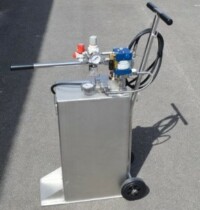
A DUO combined air driven pump and hand pump cart for great flexibility in the shop or on site.
We like air driven pumps. We manufacture air driven pump units with different features and capabilities for various jobs. All are inherently safe in respect of sparking and the pump does use electricity, lifting the burden of wiring them up and controlling the power. You are using shop air. A big seller for our company has been the Micropac DUO unit, which integrates a Micropac MW series hand pump and a compact air driven pump onto a neat 2 wheel cart/reservoir unit of 10, 20 or 50 litres for shop or site. These are used in a few different ways. If you have no air in the shop or site, you have the hand pump. If you have air, use the air driven pump. Some people prefill with the air driven pump and then do their final precise testing with the hand pump. Or work a dual use test unit where the hand pump can carry out very low pressure testing for a different task to the air driven pump. This is a very useful unit. Coming back to hand pump basics, you can always do the job even if there is no air or electricity.
If you can work with 100% air driven pumps, our Micropac PTR-M skid uses an air driven pump complete with its air and hydraulic controls on a neat frame either as bare pump with a threaded inlet port for a pump with a reservoir of 10 or 20 litres. These are widely used on site and can be carried safely in the back of a truck. You have effectively eliminated completely the effort of operating a hand pump, if that is the way you go.
The Micropac PTR-A programmable pump unit uses an air driven pump and mains programmable controller to cycle test up to 10K cycles. The touch screen display allows the operator to input test pressure, dwell times and number of cycles. An output for data logging is an option. Typical applications are fatigue testing of components like composite vessels and fuel tanks There is no hand pump at all on these specialised test units.
Why do people still use hand pumps when push button battery operation is everywhere?
Hand operation is the best and worst thing about all hand pumps. They are inexpensive, incredibly reliable for years and don’t suffer flat batteries or electronic glitches when you really need the system to work. But an operator has to do the work rather than pressing a button. The world loves push button operation but when life is at risk or you really need to get the job done, many sectors just can’t risk that somebody hasn’t bothered to charge a battery or there is a software update required. There will always be a big place for hand pumps.
After designing and manufacturing our Micropac hand pumps for over 40 years, we are the experts. We are always pleased to talk about new applications for our equipment. Contact us.

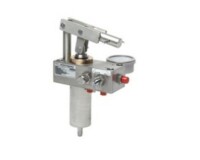
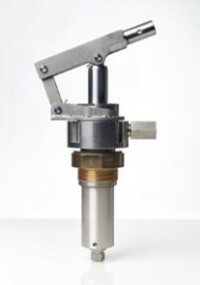

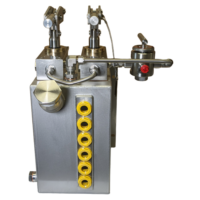
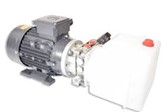



Leave A Comment